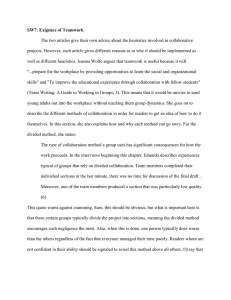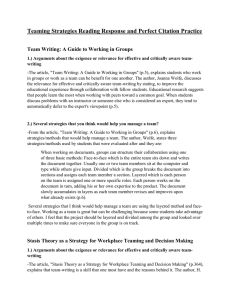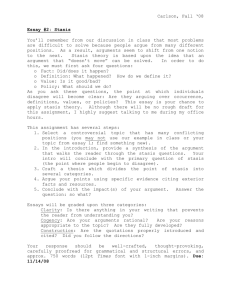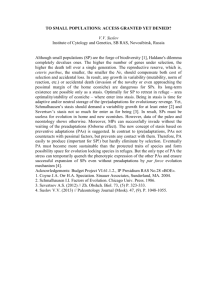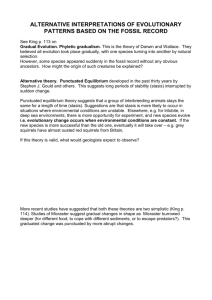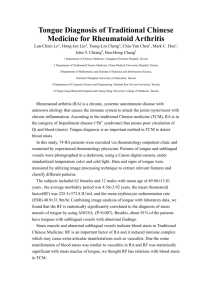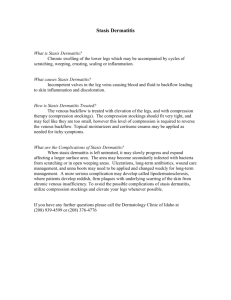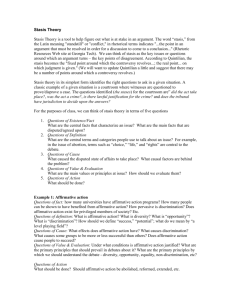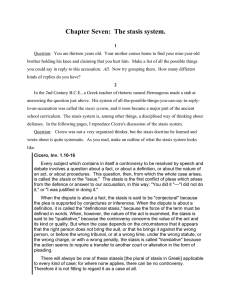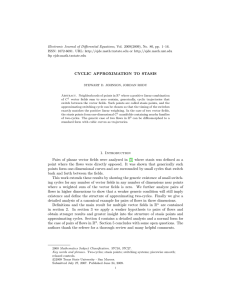Wolfe, J. (2010). Team writing: A guide to working in groups. Boston
advertisement
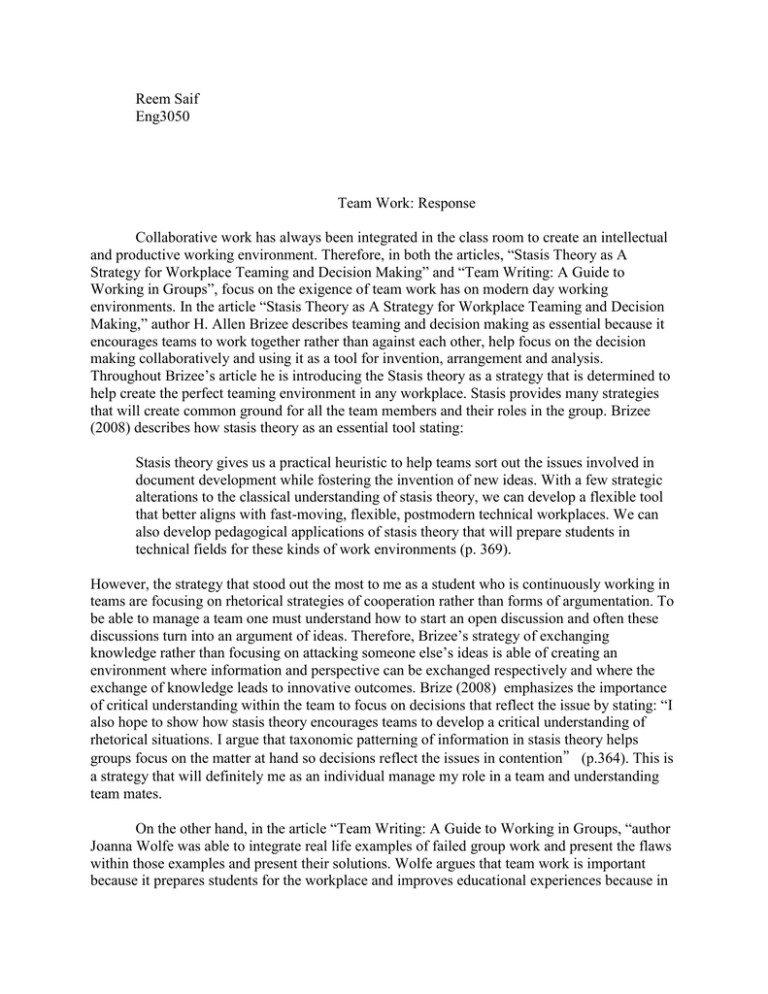
Reem Saif Eng3050 Team Work: Response Collaborative work has always been integrated in the class room to create an intellectual and productive working environment. Therefore, in both the articles, “Stasis Theory as A Strategy for Workplace Teaming and Decision Making” and “Team Writing: A Guide to Working in Groups”, focus on the exigence of team work has on modern day working environments. In the article “Stasis Theory as A Strategy for Workplace Teaming and Decision Making,” author H. Allen Brizee describes teaming and decision making as essential because it encourages teams to work together rather than against each other, help focus on the decision making collaboratively and using it as a tool for invention, arrangement and analysis. Throughout Brizee’s article he is introducing the Stasis theory as a strategy that is determined to help create the perfect teaming environment in any workplace. Stasis provides many strategies that will create common ground for all the team members and their roles in the group. Brizee (2008) describes how stasis theory as an essential tool stating: Stasis theory gives us a practical heuristic to help teams sort out the issues involved in document development while fostering the invention of new ideas. With a few strategic alterations to the classical understanding of stasis theory, we can develop a flexible tool that better aligns with fast-moving, flexible, postmodern technical workplaces. We can also develop pedagogical applications of stasis theory that will prepare students in technical fields for these kinds of work environments (p. 369). However, the strategy that stood out the most to me as a student who is continuously working in teams are focusing on rhetorical strategies of cooperation rather than forms of argumentation. To be able to manage a team one must understand how to start an open discussion and often these discussions turn into an argument of ideas. Therefore, Brizee’s strategy of exchanging knowledge rather than focusing on attacking someone else’s ideas is able of creating an environment where information and perspective can be exchanged respectively and where the exchange of knowledge leads to innovative outcomes. Brize (2008) emphasizes the importance of critical understanding within the team to focus on decisions that reflect the issue by stating: “I also hope to show how stasis theory encourages teams to develop a critical understanding of rhetorical situations. I argue that taxonomic patterning of information in stasis theory helps groups focus on the matter at hand so decisions reflect the issues in contention” (p.364). This is a strategy that will definitely me as an individual manage my role in a team and understanding team mates. On the other hand, in the article “Team Writing: A Guide to Working in Groups, “author Joanna Wolfe was able to integrate real life examples of failed group work and present the flaws within those examples and present their solutions. Wolfe argues that team work is important because it prepares students for the workplace and improves educational experiences because in team’s students are able to freely voice their point of view. The three basic methods, face to face, divided and layered, presented by Wolfe are all potential strategies if used at the right time can help me manage a team. The face-to-face method can be used when we are done with a certain task and we can meet to discuss our thoughts on the tasks, divided is done when research is needed and layered is when everyone needs to be able to complete certain tasks based on previous knowledge. Wolfe (2009) discusses how alternating between methods leads to the best outcome by stating: “By figuring out which type of collaboration will be the most beneficial at various stages in the project, team members can avoid many problems and ensure that they use their time productively” (p. 9). Also, alternating between methods can lead to one method not being used because they require more work or is time consuming. Wolfe (2009) highlights this flaw stating: Despite its substantial advantages, student teams tend to underutilize layered collaboration- probably because it requires the most planning and experience of the three methods. While face-to-face collaboration and divided collaboration seem to come naturally to student teams, layered collaboration requires forethought and some basic training to use it effectively. In part because layered collaboration is unfamiliar to students-and in part because it is the form of collaboration that most frequently leads to higher-quality products-this book stresses layered collaboration in much of the advice and many of the examples provided. (p.9) If time is put into understanding and integrating the three methods properly into the team, the team work would be evenly distributed and will be reflected on the work produced. Works Cited Brizee, H. (2008). Stasis Theory as a Strategy for Workplace Teaming and Decision Making. Journal of Technical Writing and Communication, 363-385. Wolfe, J. (2010). Team writing: A guide to working in groups. Boston: Bedford/St. Martin's.
